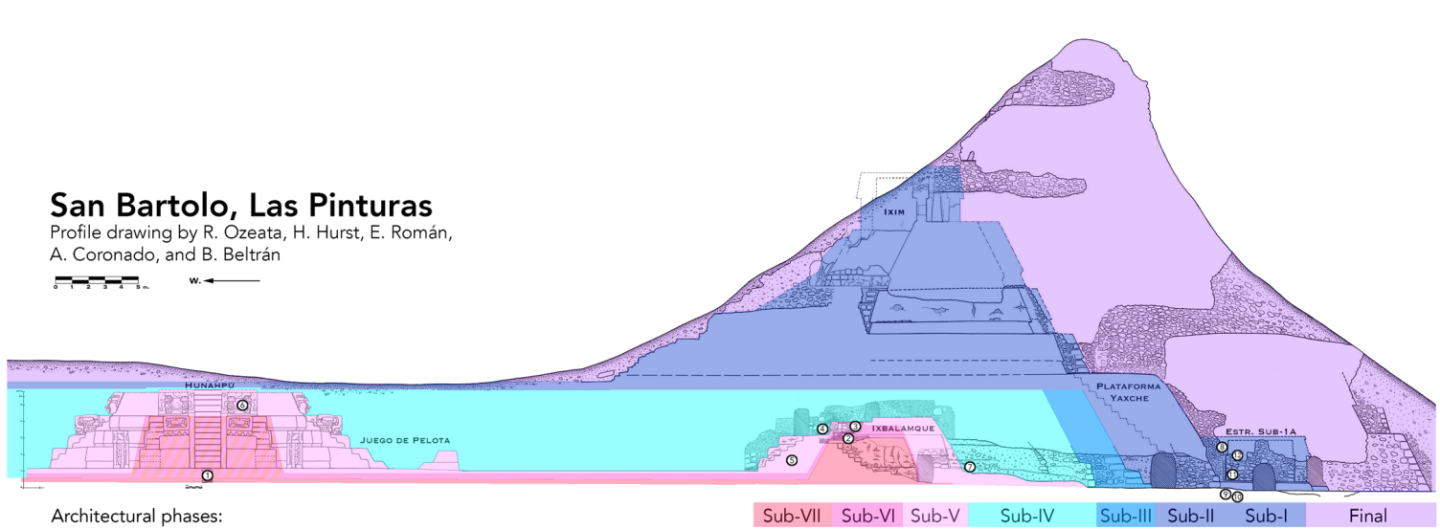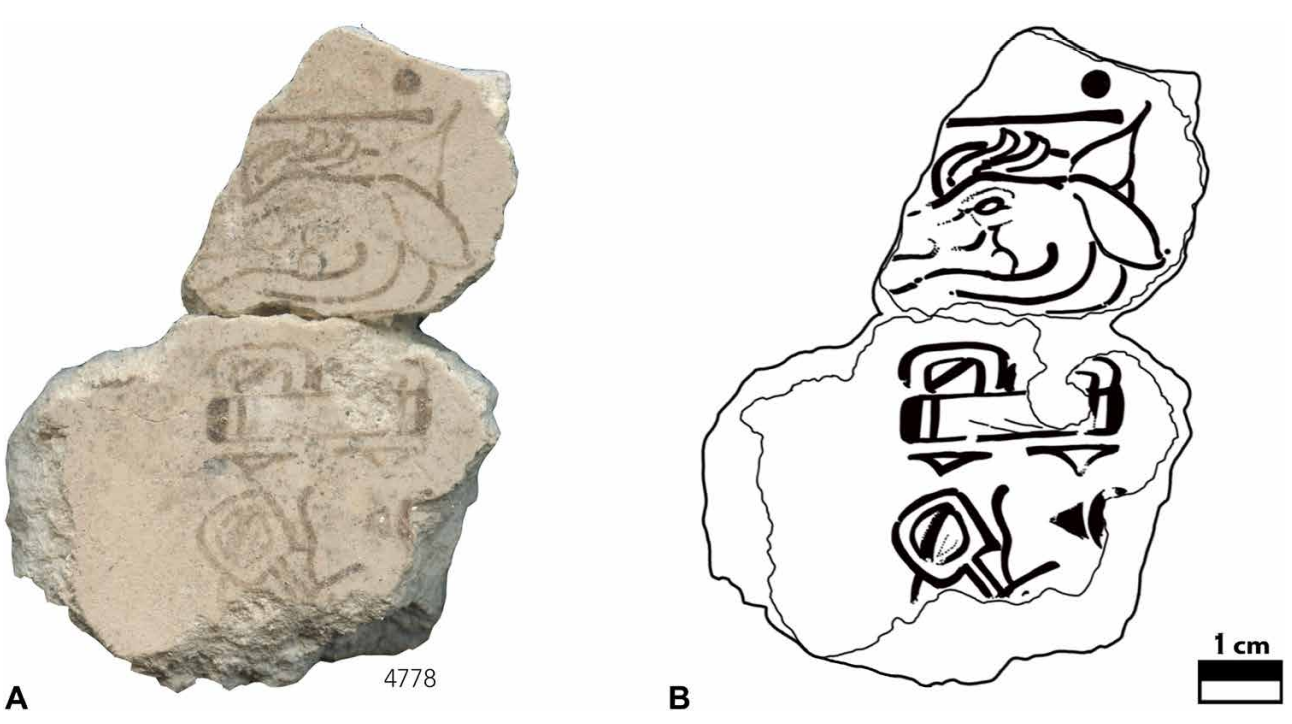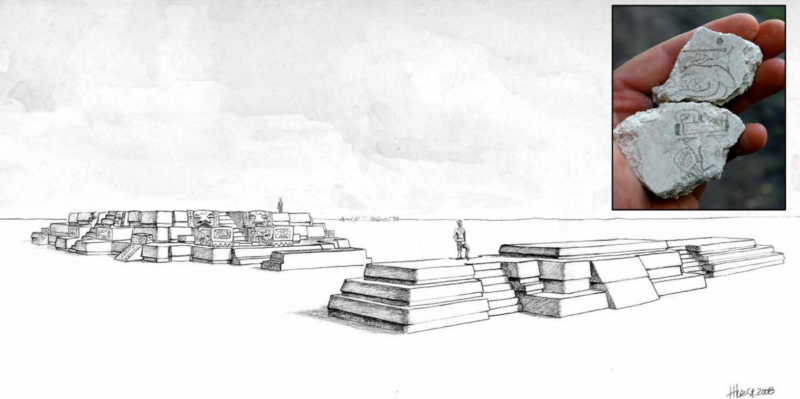Amid rubble buried beneath a Maya pyramid in Northern Guatemala, archaeologists found a broken bit of plaster with a glyph painted on it. A bar-and-dot symbol for the number “7” is drawn above a deer head, representing “7 Deer,” a date in the 260-day Maya calendar system. At around 2,300 years old, the painted plaster is the oldest known use of the calendar system once used by cultures across Mesoamerica, including the Aztec and the Maya—and still used by many Maya communities today.
“Its persistence in many communities up to the present day stands as a testament of its importance in religious and social life,” wrote University of Texas archaeologist David Stuart and his colleagues in their recent paper about the glyph. “Our ability to trace its early use back some 23 centuries stands as another testament to its historical and cultural significance."
7 Deer, 2,300 years ago
The Maya calendar combines the numbers 1 through 13 with 20 words for animals, plants, or concepts. Those 20 words rotate in a set order; for instance, Deer is always followed by Rabbit, Water, Dog, Monkey, and Grass. When the numbers paired with the days reach 13, they start over, so 13 Rabbit would be followed by 1 Water, 2 Dog, and so on. (Pop quiz: What’s the day after 7 Deer?)
Eventually, that system produces 260 combinations of numbers and words. But here’s where things get slightly complicated because a Maya year still lasted 365 days. The first day of the year could fall on any day whose name included a “Year-Bearer,” one of the animals, plants, or concepts allowed to start a new year. Think of it as similar to the way New Year’s Day can fall on any day of the week in our system; the year can start on a Tuesday or a Friday with no problem.
“Deer” is a Year-Bearer in the Maya calendar, so 7 Deer could have marked the beginning of a new year. It could also have been the date of some other important event, or even the name of a person or deity—both could be named for days. Stuart and his colleagues aren’t sure, because there are only two other glyphs on the plaster fragment. The second is still untranslated, because it’s a very early form of Maya writing, which looks quite different from the Classic Maya that archaeologists typically see. And the third symbol may be another archaic glyph, or it may be part of an image that once accompanied the writing; the archaeologists haven’t figured that out yet.
But the “7 Deer” glyph is definitely an example of the 260-day calendar in use 2,300 years ago, which makes it about a century older than the next-oldest examples. Some even older examples may exist, but archaeologists are still debating their exact ages and, in some cases, whether they’re actually dates. Stuart and his colleagues are sure about the age of the “7 Deer” glyph, however; they radiocarbon-dated fragments of charcoal found near the plaster fragment, in rubble from an early phase of construction at the site of the Las Pinturas Pyramid in San Bartolo, Northern Guatemala.

The pink structures, labeled "Sub-V," are what the temple complex looked like when the "7 Deer" glyph was painted. "Sub-IV" is the base of the pyramid built above the older temple complex.

The glyph at the top of the fragment is the date "7 Deer," missing a dot on the left.
It’s pyramids all the way down
Archaeologists found the “7 Deer” glyph, along with 248 other fragments of painted lime plaster, among the several tons of rubble, mud, and rock that filled the foundations of a pyramid built at the site in the 200s BCE. Eleven of those fragments, including the “7 Deer” glyph, have Maya script painted on them, and they’re some of the oldest examples of Mesoamerican writing that archaeologists have found so far. They’re so old, in fact, that, like the glyphs that follow “7 Deer,” it’s difficult for archaeologists to translate some of the symbols.
Those plaster fragments are the remains of murals that once adorned the walls of a temple, a tiered platform, and a ball court and molded plaster masks that once stared down from the facades of a pyramid, all painted in several shades of red, pink, yellow, and black. But sometime in the 200s BCE, the Maya smashed the plaster and razed the buildings at the site to the ground. Over the ruins of the old temple complex, they piled several tons of rock, mud, and broken plaster to fill in the foundations of the new pyramid. The base of the new pyramid was large enough to cover the whole complex that once stood in its place: the temple, the ball court, and the tiered platform, all built over an even older site sometime around 300 BCE.
That process is something else that—like the 260-day calendar—several Mesoamerican cultures shared. Old temples and monuments would be ritually terminated, or “killed,” and newer, larger versions would simply be built on top of the old one. The same process happened at least six times at the Aztec Templo Mayor in Tenochtitlan, which is now Mexico City.
Dating the Maya calendar
The fragments of text, including the calendar date, are among the oldest known examples of writing from anywhere in Mesoamerica, but they offer hints that the Maya had already been writing for a long time by the 300s BCE. Stuart and his colleagues say that the script on the fragments belongs to a mature, well-developed writing system, not something that people were just figuring out.
Archaeologists have even noticed that the text fragments are painted in several distinct handwriting styles. That suggests several scribes working at the temple complex to paint the text and art that once covered its walls.
Like the Maya writing system, the Maya calendar is probably much older than its first appearance on the 2,300-year-old plaster fragment. It was probably well-established and familiar by the time anyone used it to record a date on the walls of a temple complex. Stuart and his colleagues suggest that the calendar may date back to the period archaeologists call the Middle Preclassic, between 900 BCE and 300 BCE. (The plaster fragments and the buildings they once decorated at San Bartolo date to what’s called the Late Preclassic.)
Understanding when, where, and how the Mesoamerican calendar developed is important because the 260-day system underlies many aspects of Maya cosmology, religion, and social life. “The evidence now suggests that we can no longer single out the region of Mesoamerica, such as Oaxaca, as ‘the’ point of origin for scripts or calendrical record keeping,” Stuart and his colleagues wrote.
Science Advances, 2022. DOI: 10.1126/sciadv.abl9290 (About DOIs).



3175x175(CURRENT).thumb.jpg.b05acc060982b36f5891ba728e6d953c.jpg)

Recommended Comments
There are no comments to display.
Join the conversation
You can post now and register later. If you have an account, sign in now to post with your account.
Note: Your post will require moderator approval before it will be visible.